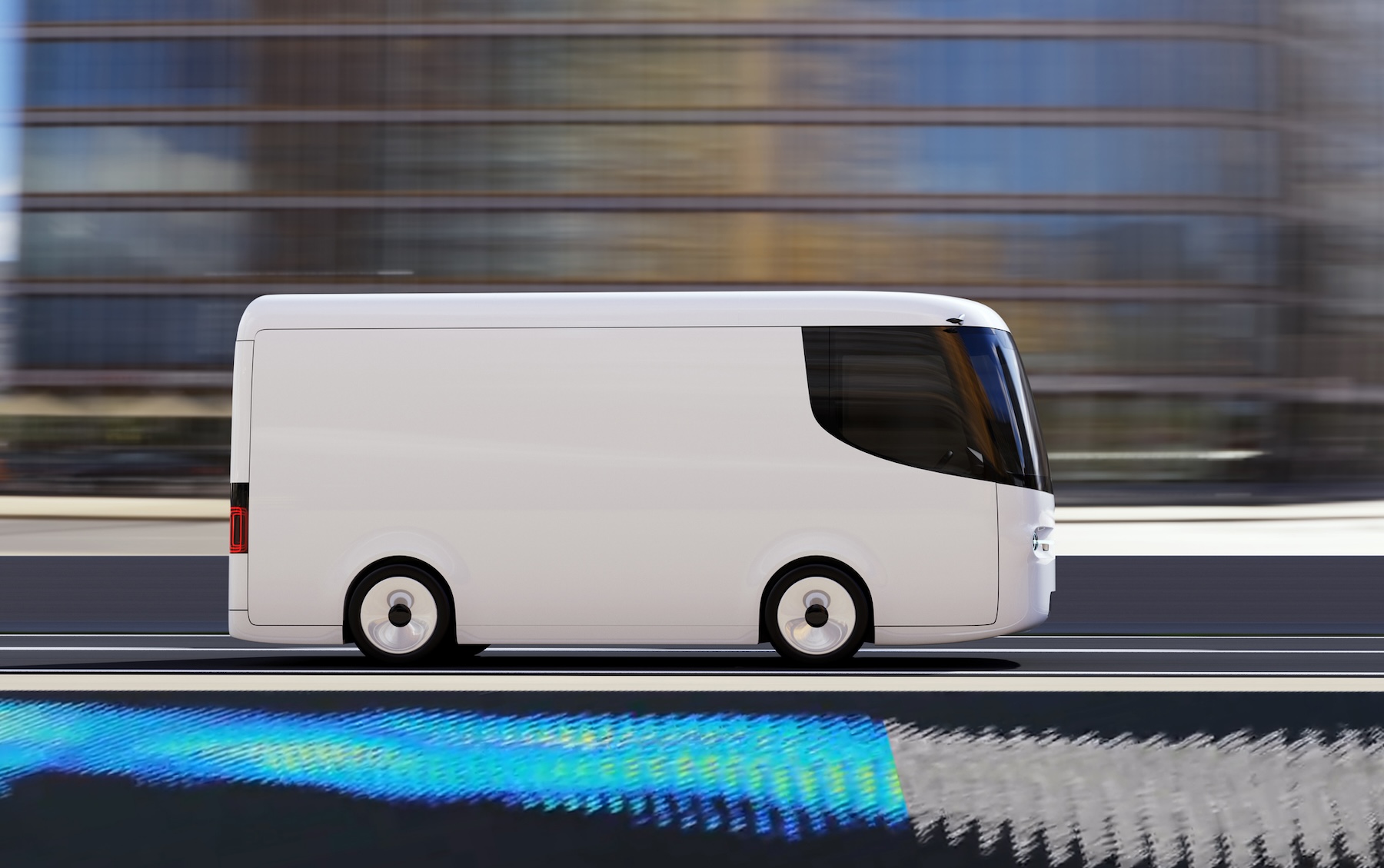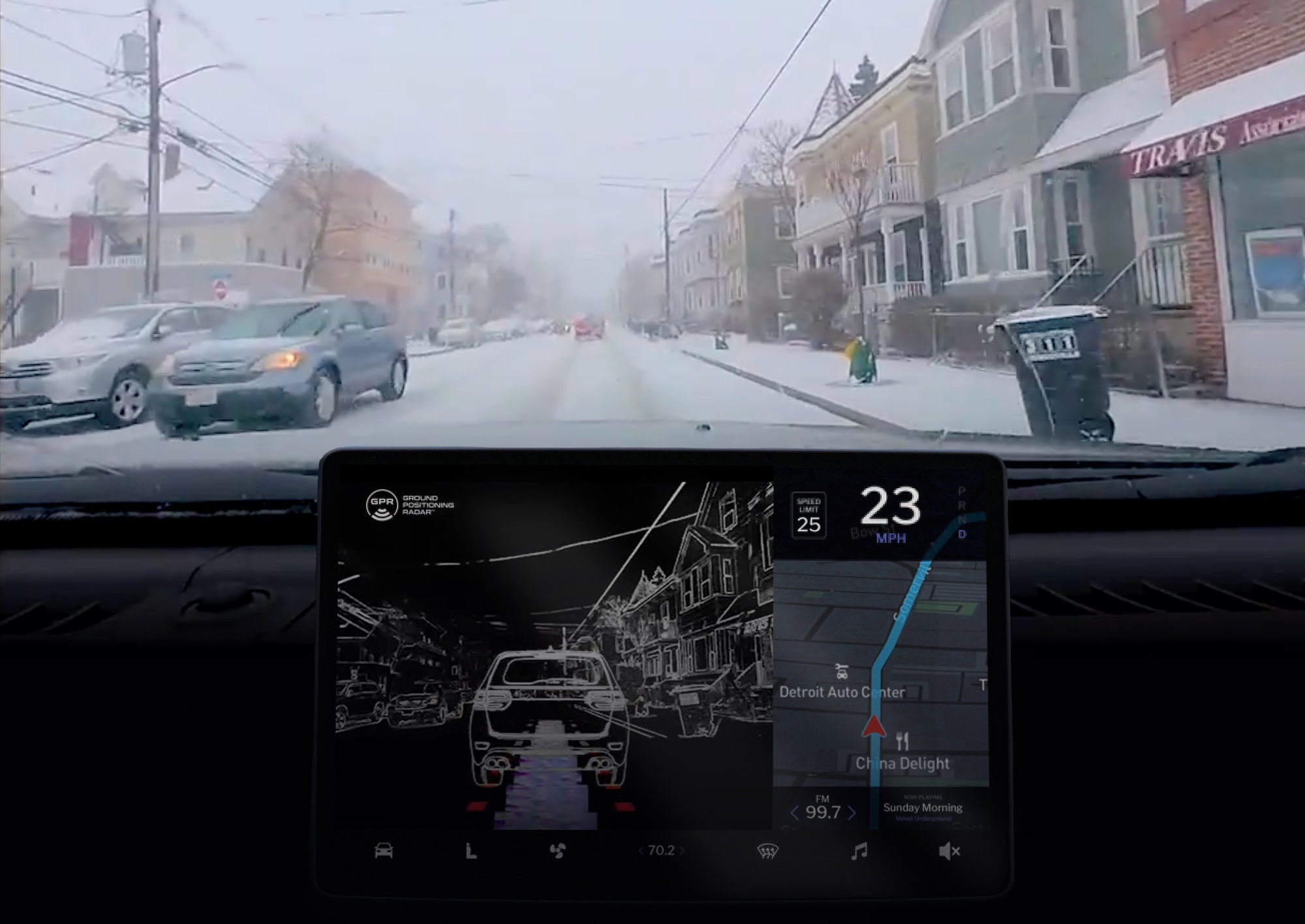Why use Ground Penetrating Radar for Localization?
As industries such as mining, trucking, delivery, seaports, and other off-road applications embrace automation in challenging environments, the need for robust positioning technologies becomes increasingly apparent. Traditional sensors like LiDAR, cameras, and GPS have propelled the industry forward. However, they still face significant challenges when operating in adverse weather conditions, changing environments, or areas with poor GPS coverage.
Full autonomy requires a solution that is resilient in these conditions.
Enter ground penetrating radar (GPR), a cutting-edge technology that offers a unique and complementary approach to autonomous vehicle (AV) localization, especially in challenging scenarios. GPR penetrates the ground beneath the vehicle by harnessing electromagnetic waves’ power, mapping the subsurface terrain with unparalleled accuracy and consistency.

Understanding Ground Penetrating Radar (GPR):
At its core, GPR utilizes electromagnetic radiation to penetrate subsurface materials, generating detailed maps of the terrain beneath the surface. Originally developed for geological surveys and archaeological excavations, GPR has seamlessly transitioned into autonomous mobility, offering a novel approach to localization.
Why GPR Excels in AV Localization:
Weather Resistance: Unlike LiDAR and optical sensors, which can be obstructed by adverse weather conditions such as fog, rain, or snow, GPR operates independently of surface visibility as it’s looking in a different direction. Penetrating beneath the surface, GPR remains unaffected by atmospheric disturbances, ensuring continuous and reliable localization even in inclement weather.
Surface Agnostic: Road construction, vegetation growth, or other surface alterations can significantly impact the performance of surface-based sensors. However, GPR data is protected by the ground, remaining stable over time. This inherent surface independence makes GPR perfect for off-road applications, including mining, construction, and seaport operations.
Independence from GPS: GPS is a cornerstone of many localization systems but has limitations. GPR relies on subsurface features rather than GPS signals, enabling accurate positioning in areas with weak or denied GPS coverage. Moreover, GPR eliminates vulnerabilities associated with GPS signal jamming, enhancing AVs’ overall security and safety.
Localization Redundancy: Redundancy is crucial in safety-critical applications like autonomous transportation. GPR is a complementary localization solution, augmenting existing sensor suites to ensure robust performance across various operating conditions. By integrating GPR with other sensors through sensor fusion techniques, AVs can achieve new levels of safety and reliability, enabling them to perform minimum-risk maneuvers confidently.
WaveSense for Redundancy
The leading solution for GPR localization is the WaveSense system. WaveSense comprises three integral components:
GroundSense Sensor: This sensor captures the subsurface data, generating unique fingerprints that serve as the foundation for localization.
NavSense Localization Software: This software matches the subsurface scans in real-time, accurately outputting the vehicle’s position, even in areas with weak GPS signals or roads lacking clear markings.
MapSense Mapping Suite: This suite transforms the collected data into high-definition maps, further improving positioning accuracy with post-processed reference data.
By leveraging the stability and consistency of subsurface features, WaveSense offers a robust solution for localization, addressing critical challenges that have hindered the widespread adoption of self-driving vehicles.

The Future of Localization:
As we strive toward a driverless future, the pursuit of safety and efficiency drives global efforts in innovation. Sensor fusion, integrating modern technologies like GPR with existing sensor technologies such as LiDAR, GPS, and inertial measurement units (IMUs), becomes a pivotal enabler of AV localization. By harnessing the unique capabilities of GPR and embracing sensor fusion methodologies, industries ranging from mining to transportation can unlock new frontiers in autonomy, ushering in an era of safer, smarter, and more efficient operations.
At GPR, we’re leading the way in localization technology for automated driving by creating long-lasting, high-definition maps of road and off-road subsurfaces. Our maps are protected by the ground and remain accurate in even the most challenging environmental conditions. Contact us to learn more about GPR for localization.
